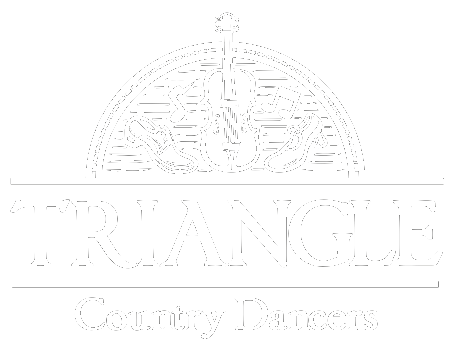Courtesy and Etiquette
Encouraged for both newcomers and experienced dancers seeking to be better dance partners
Dancing without causing injury:
Join the shorter dance line, to avoid overcrowding.
Dancers should dance cautiously and gently with an unfamiliar partner. Be prepared to modify your dancing style to accommodate your partner’s abilities.
Get consent for any flourishes or twirls.
Stay within your space, watch those elbows when swinging, and always be situationally aware of others.
Be on-time for the next dance move or progression.
“Giving weight,” a term for the slight arm tension between dancers, should be shared evenly.
Interacting without causing distress:
Dancers can ask anyone to dance, and anyone can dance either role, but no one should feel obligated to dance lead, follow, or switch.
It is okay to politely decline an invitation to dance, “No, thank you,” no explanation needed.
All behavior, on and off the dance floor, must reflect respect for other dancers. Harassment, unwelcome advances, or bullying will not be tolerated.
Defensive dancing
(with thanks to the Scissortail Dance community)
If someone makes you feel unsafe, uncomfortable, endangered, or embarrassed, please don’t hesitate to let them know immediately. If you don’t feel comfortable speaking to them directly, please contact the Board Member on Duty (best) or use the incident form on the website (also see the Complaints Process section).
In a fast-moving dance, it can be hard to communicate clearly. If you need to address a dangerous situation in the moment, try one of these:
Non-verbal cues
Gently move your partner's arm or hand to a more comfortable position.
Move yourself away from the uncomfortable or dangerous situation.
Carefully physically resist invitations to flourish if you do not consent. This may mean letting your arm go limp, pulling it down, or withdrawing your hand from theirs.
Reduce the amount of support you are giving if your partner isn’t sharing weight.
Visual prompts for dance directions can be effective, especially for a new dancer who is trying to hear the calls.
Verbal Cues
Short, simple messages are best: “I need more space.” “Please swing slower.” “Hurts my hands.”
When all else fails, “OUCH!” works very well!
Promoting a supportive and welcoming community
Welcome and dance with newcomers.
Listen quietly to the caller during the walk-through, even if you think you know the dance.
Dance with who is coming at you.
When you finish a dance, look to the sidelines and ask someone who sat out the last one.
Supporting the Caller, Musicians and Sound Techs
At the start of a new dance, line up and create “hands four” quickly.
Keep the chat time short as dancers are getting lined up, then give your attention to the caller.
Keep crowd noise down. It’s challenging to mix and balance sound at any dance, and crowd noise makes it even harder. Simply increasing the volume of the music is not a good solution for anyone.
Newcomers, there is a half-hour beginner lesson before every dance. If you would like to identify yourself as a newcomer, borrow one of the blue buttons at the front desk. If you came with another newcomer, please try to dance with more experienced dancers to learn faster, then you can plan to dance together with confidence after the break.
Advanced dancers, we rely on you to use good judgment to respond to fellow dancers, the crowdedness of the hall, music, and flow of the dance. Be alert to the facial expressions and body language of other dancers, especially newcomers. An encouraging smile can make all the difference!
Additional reading on safety from other dance communities.
OFB/Asheville
https://oldfarmersball.com/safety/
BIDA/Boston
https://www.bidadance.org/safety/
Charlotte Contra Dance
https://www.charlottecontradance.org/code-of-conduct
Scissortail/Oklahoma
https://drive.google.com/file/d/1ZE7iE0zGk_YYjPEFakkXu7GFpUo8UwcP/view
